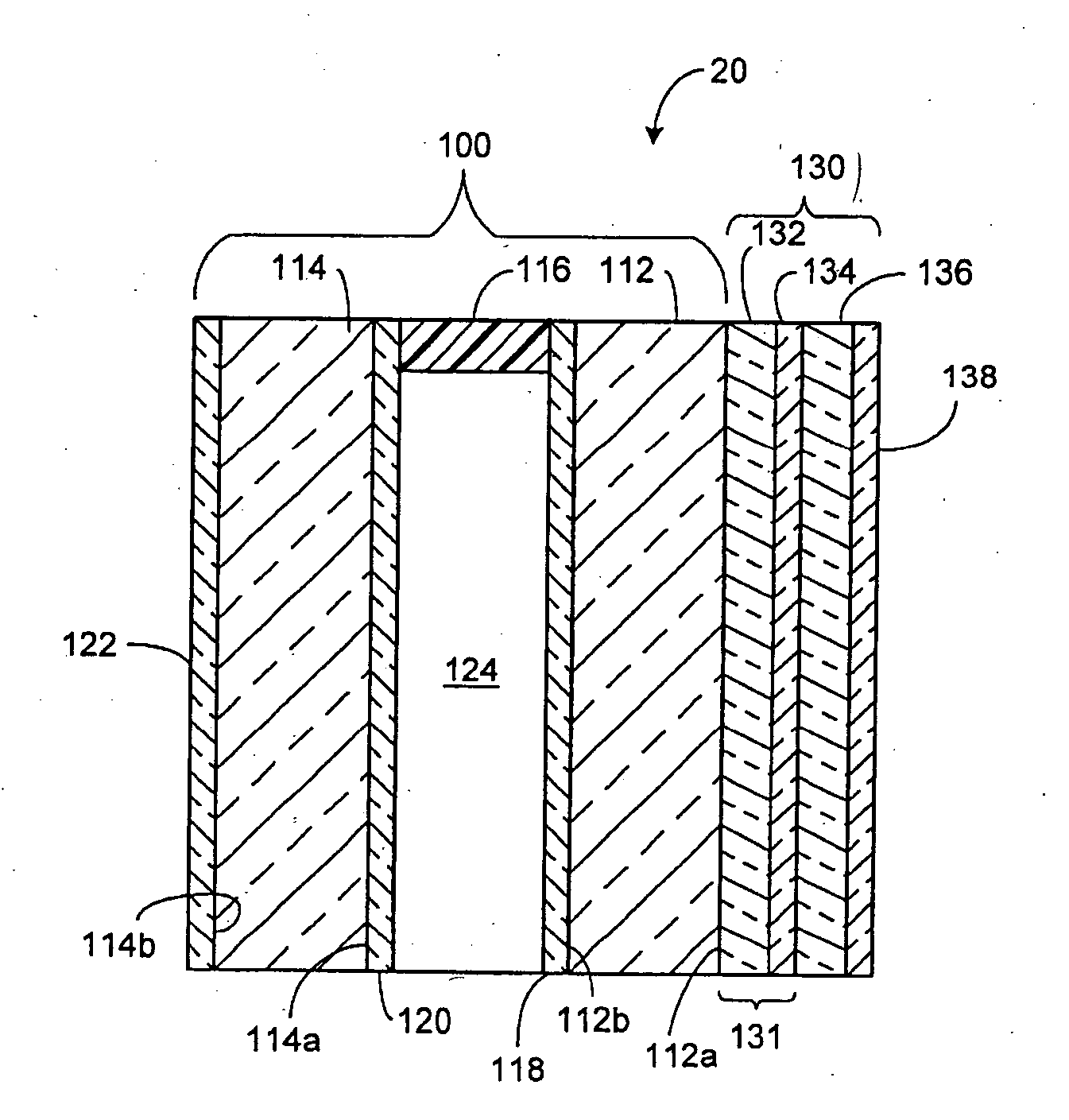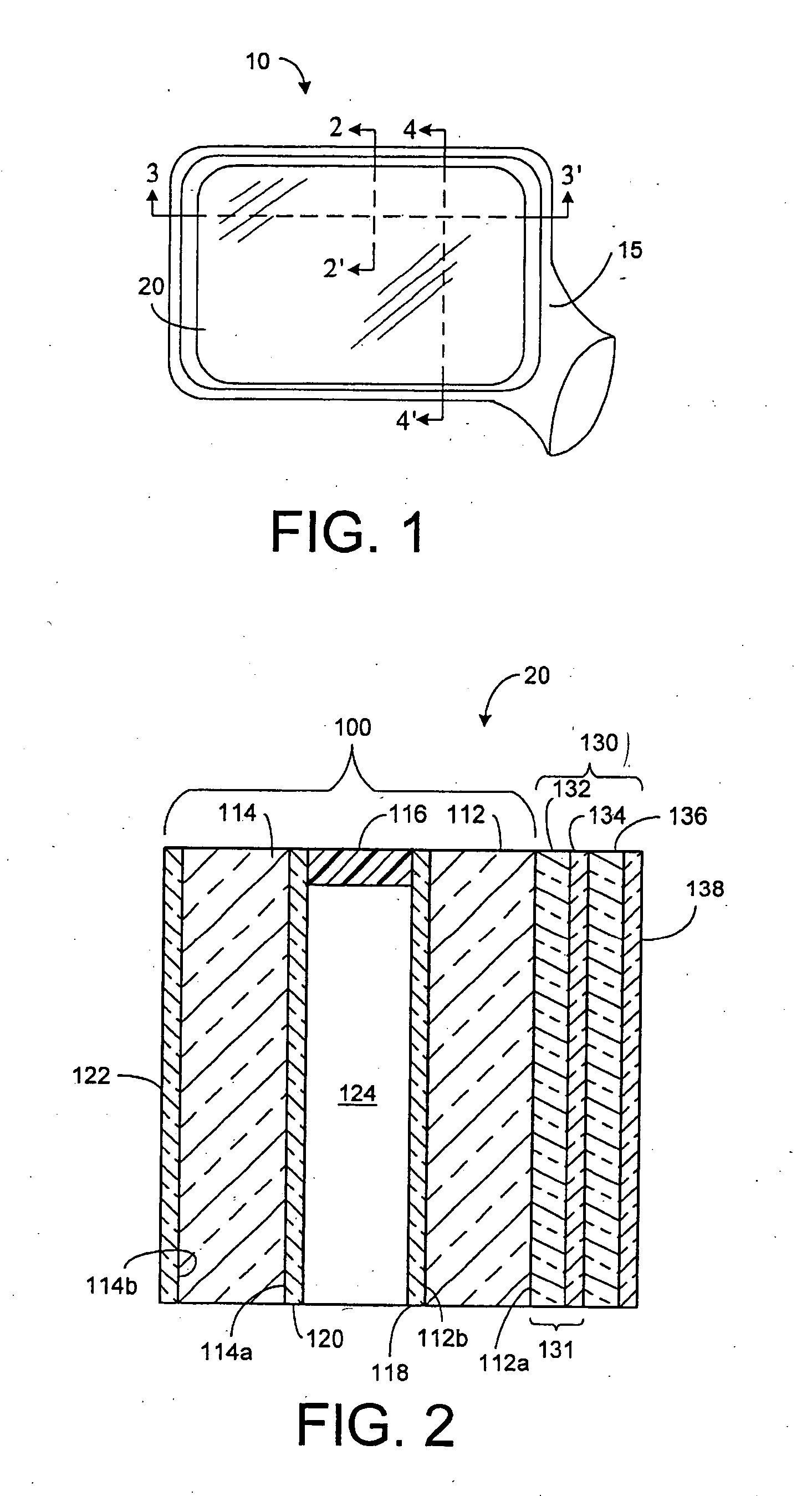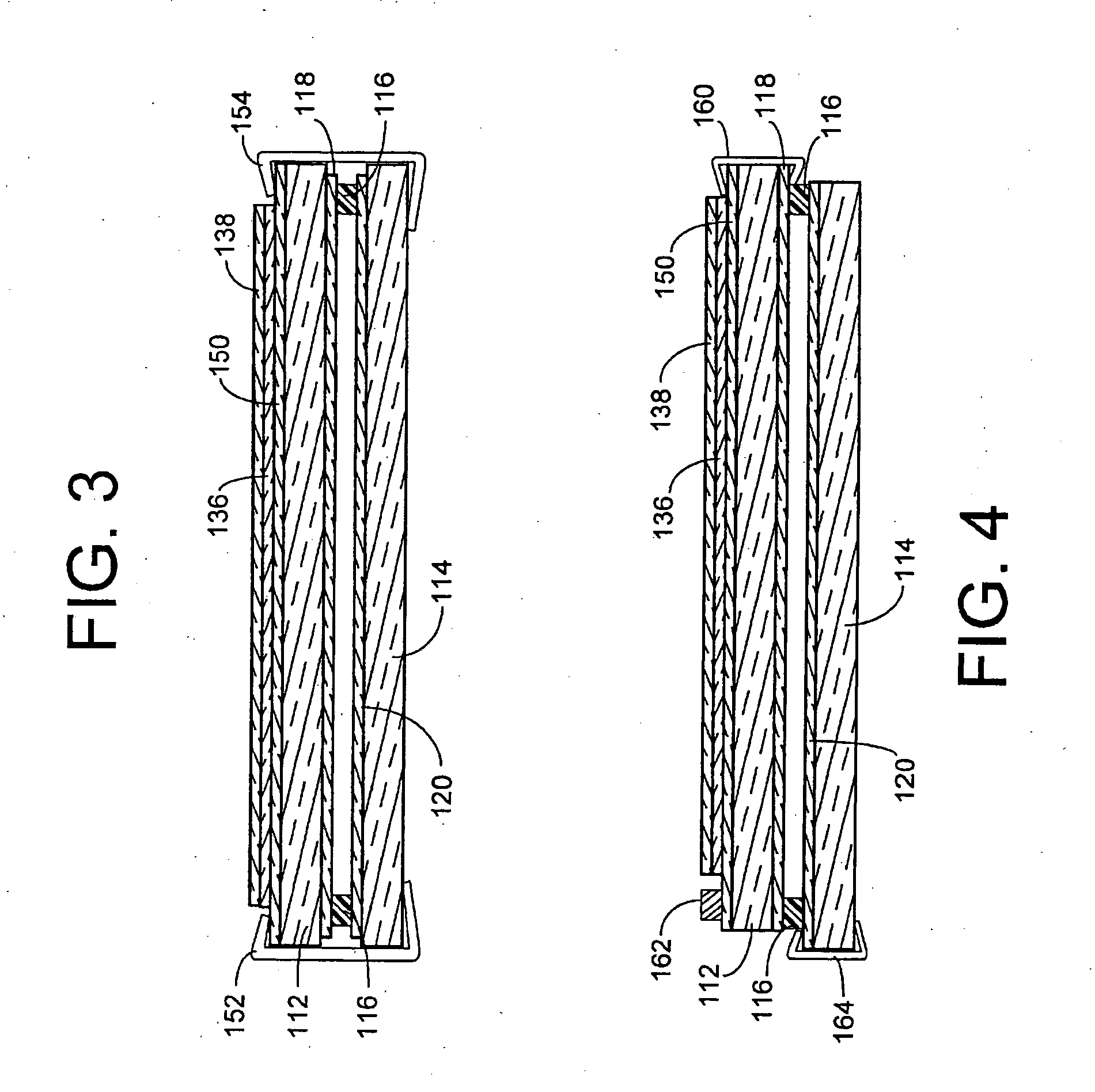Electrochromic device having a self-cleaning hydrophilic coating with a controlled surface morphology
a technology of hydrophilic coating and electrochromic coating, which is applied in the direction of mirrors, instruments, vehicle components, etc., can solve the problems of oil, grease, and other contaminants that can also fill the pores of the siosub>2 /sub>layer, and achieve enhanced color neutrality, enhanced reflectance characteristics, and reduced manufacturing costs
- Summary
- Abstract
- Description
- Claims
- Application Information
AI Technical Summary
Benefits of technology
Problems solved by technology
Method used
Image
Examples
example 1
[0083] Two identical electrochromic mirrors were constructed having a rear element made with 2.2 mm thick glass with a layer of chrome applied to the front surface of the rear element and a layer of rhodium applied on top of the layer of chrome using vacuum deposition. Both mirrors included a front transparent element made of 1.1 mm thick glass, which was coated on its rear surface with a transparent conductive ITO coating of ½ wave optical thickness. The front surfaces of the front transparent elements were covered by a coating that included a first layer of 200 Å thick TiO2, a second layer of 250 Å thick SiO2, a third layer of 1000 Å TiO2, and a fourth layer of 500 Å thick SiO2. For each mirror, an epoxy seal was laid about the perimeter of the two coated glass substrates except for a small port used to vacuum fill the cell with electrochromic solution. The seal had a thickness of about 137 microns maintained by glass spacer beads. The elements were filled with an electrochromic s...
example 2
[0086] An electrochromic mirror was constructed in accordance with the description of Example 1 with the exception that a different first surface coating stack was deposited. The first surface stack consisted of a first layer of ITO having a thickness of approximately 700 Å, a second layer of TiO2 having thickness of 2400 Å, and a third layer of SiO2 having a thickness of approximately 100 Å. The physical thickness of the ITO layer corresponds to approximately ¼ wave optical thickness at 500 nm and the physical thickness of the TiO2 layer corresponds to approximately 1 wave optical thickness at 550 nm. The proportion of anatase titania to rutile titania in the TiO2 layer was determined to be about 89 percent anatase form and 11 percent rutile form from X-ray diffraction analysis of a similar piece taken from glass run in the same timeframe under similar coating parameters.
[0087] In the high reflectance state, the electrochromic mirror had the following averaged values: L*=80.37, a*...
example 3
[0088] An electrochromic mirror was modeled using commercially available thin film modeling software. In this example, the modeling software was FILMSTAR available from FTG Software Associates, Princeton, N.J. the electrochromic mirror that was modeled had the same constructions as in Examples 1 and 2 above except for the construction of the optical coating applied to the front surface of the mirror. Additionally, the mirror was only modeled in a dark state assuming the completely absorbing electrochromic fluid of index 1.43. The optical coating stack consisted of a first layer of SnO2 having a thickness of 720 Å and a refractive index of 1.90 at 550 nm, a second layer of dense TiO2 having a thickness of 1552 Å and a refractive index of about 2.43 at 550 nm, a third layer of a material with an index of about 2.31 at 550 nm and a wavelength-dependent refractive index similar to TiO2 applied at a thickness of 538 Å, and a fourth layer of SiO2 having a refractive index of 1.46 at 550 n...
PUM
 Login to View More
Login to View More Abstract
Description
Claims
Application Information
 Login to View More
Login to View More - R&D
- Intellectual Property
- Life Sciences
- Materials
- Tech Scout
- Unparalleled Data Quality
- Higher Quality Content
- 60% Fewer Hallucinations
Browse by: Latest US Patents, China's latest patents, Technical Efficacy Thesaurus, Application Domain, Technology Topic, Popular Technical Reports.
© 2025 PatSnap. All rights reserved.Legal|Privacy policy|Modern Slavery Act Transparency Statement|Sitemap|About US| Contact US: help@patsnap.com



